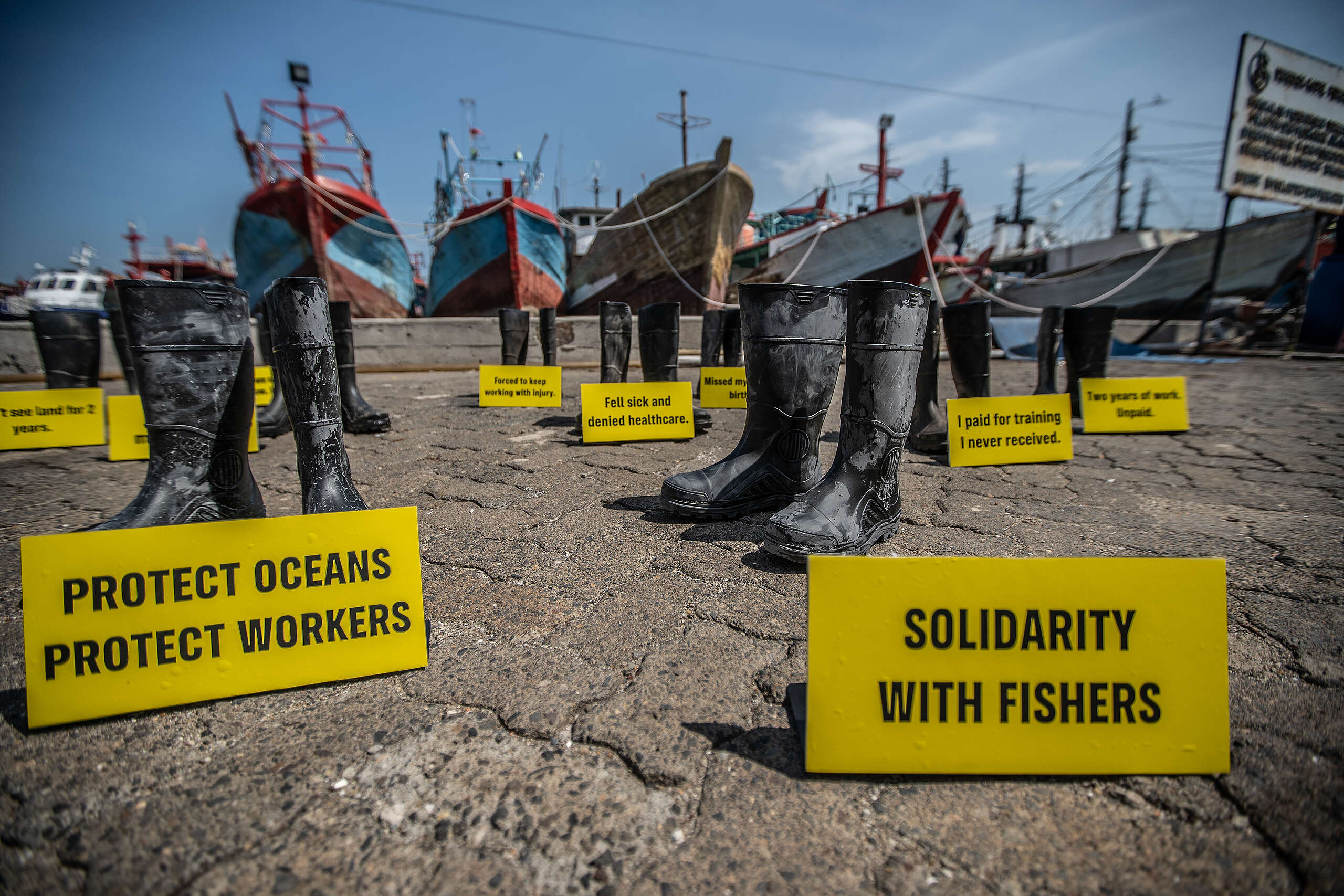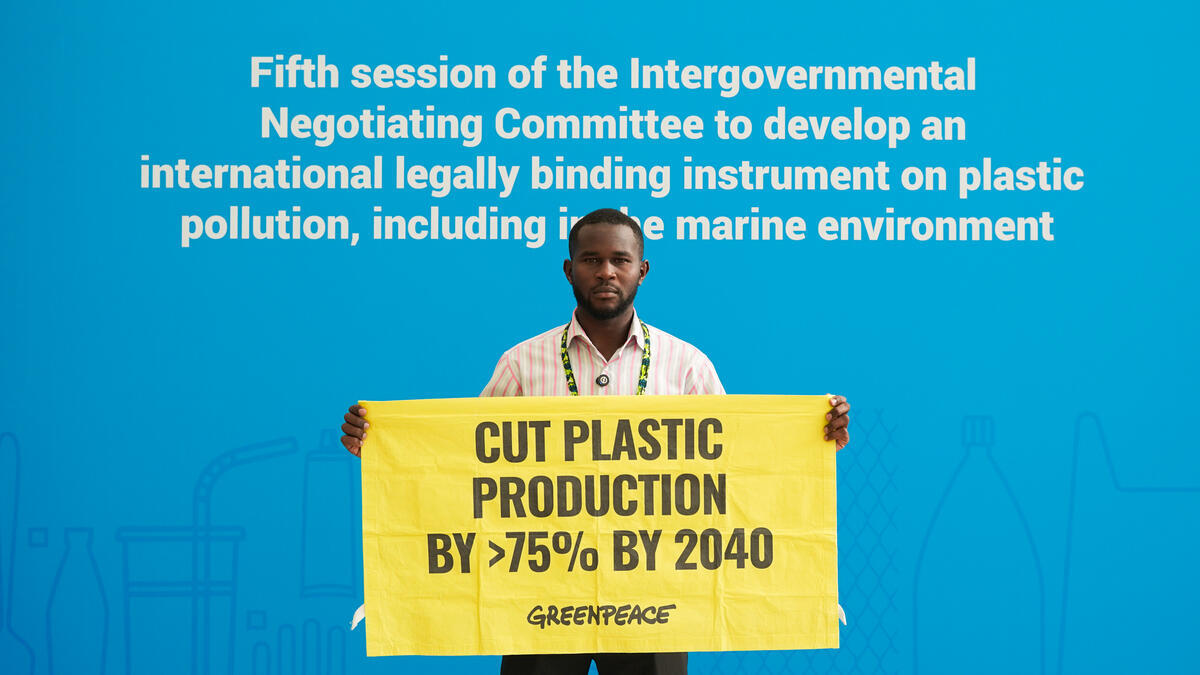According to the 2015 World Economic Forum Global Risks 2015 Report, the water crisis is the world’s #1 risk. The problem is not only the amount of water available in the world’s rivers, lakes, and aquifers, but the pollution of those resources from human contamination, including bacteria, toxins, and nutrient loading.
Around the world, lakes are dying off through bacterial and algae blooms. Lake Erie between Canada and the US, Lough Neagh in the UK, Lake Taihu in China, to name but a few of the thousands of dead or swampy lakes around the world devastated by humanity’s commercial, agricultural, and septic runoff.
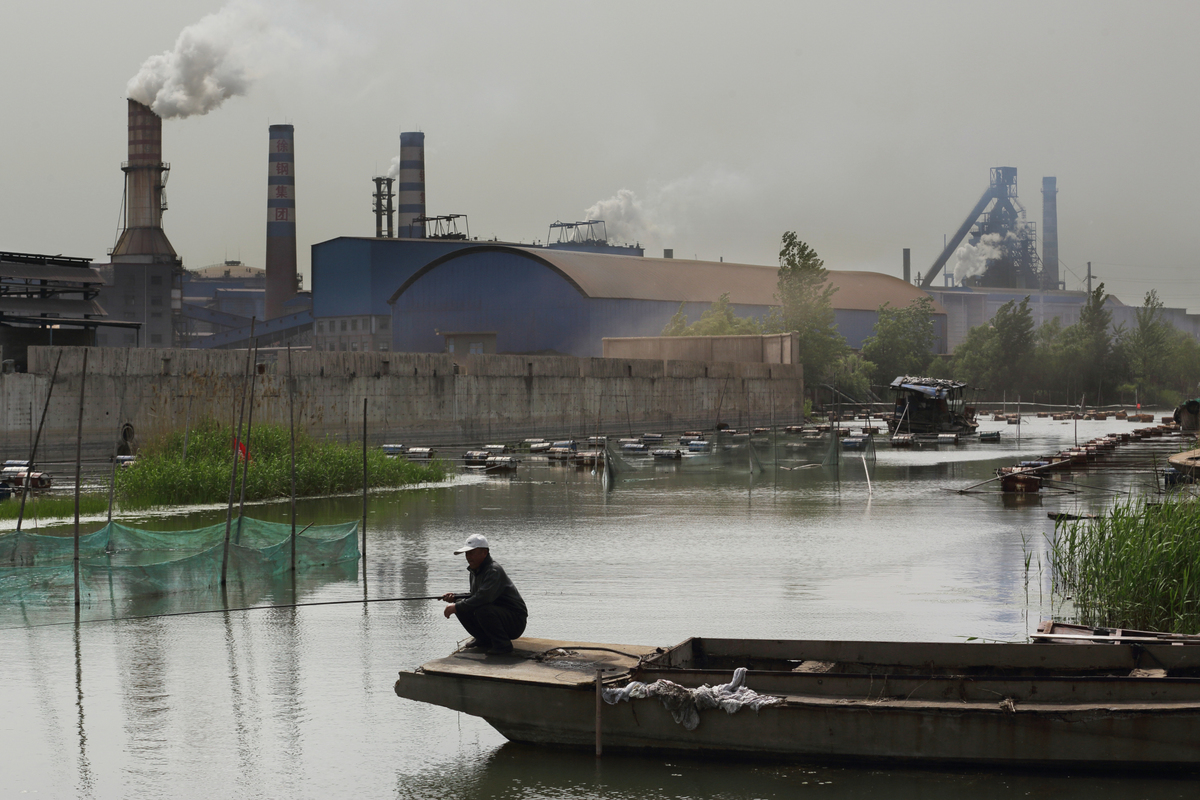
Xuzhou Steel Group’s South Eastern steel plant is located near Weishan Lake.
In 2009, Earth systems scientist Johan Rockström and colleagues published “Planetary Boundaries” in the journal Nature, showing that human activity has threatened seven essential systems – including fresh water and the disruption of the world’s nitrogen and phosphorus cycles, which effect fresh water.
Phosphorous and nitrogen are critical for organic molecules such as nucleic acids, adenosine triphosphate (ADT), and for DNA. All plants need phosphorous and nitrogen and have evolved to find and absorb these nutrients. However, nutrient loading from human sources leads to accelerated productivity in water – called eutrophication – signalled by algae blooms, oxygen depletion and dead zones. Agricultural fertilisers, phosphate soaps, and household septic systems all contribute to the nutrient cycle disruption.
Human communities, factories and livestock also contribute bacteria to the world’s water tables. Health officials are particularly concerned with coliform bacteria, often used to indicate hepatitis or giardia, since those pathogens prove difficult to detect but often exist in combination with fecal coliform. In particular, health authorities monitor water for Escherichia coli (E. coli), a source of disease.
Industrial and domestic toxic waste products including arsenic, fluoride, selenium, uranium, iron, manganese, mercury, pesticides, endocrine disruptors, pharmaceuticals and microbial pathogens are also major sources or water contamination.
Fortunately, this triple threat of nutrient loading, bacteria, and toxins – can be mitigated using organic, biological methods, generally known as “bioremediation.”
Bioremediation
Certain microbes, bacteria, fungi, and plants can remove or metabolise pollutants in soil or water, including assisting in the removal of industrial chemicals, petroleum products, and pesticides. Some compounds – certain heavy metals, such as cadmium or lead, for example – resist bioremediation. However, some studies have found that fish bone and bone char can remove small amounts of lead, cadmium, copper, and zinc from soils.
A healthy ecosystem is, in itself, a bioremedial network of organisms, processing each others’ wastes, and this process can be enhanced by design. Purely organic systems include bioswales, plant buffers, and biofilters regulated by microorganisms.
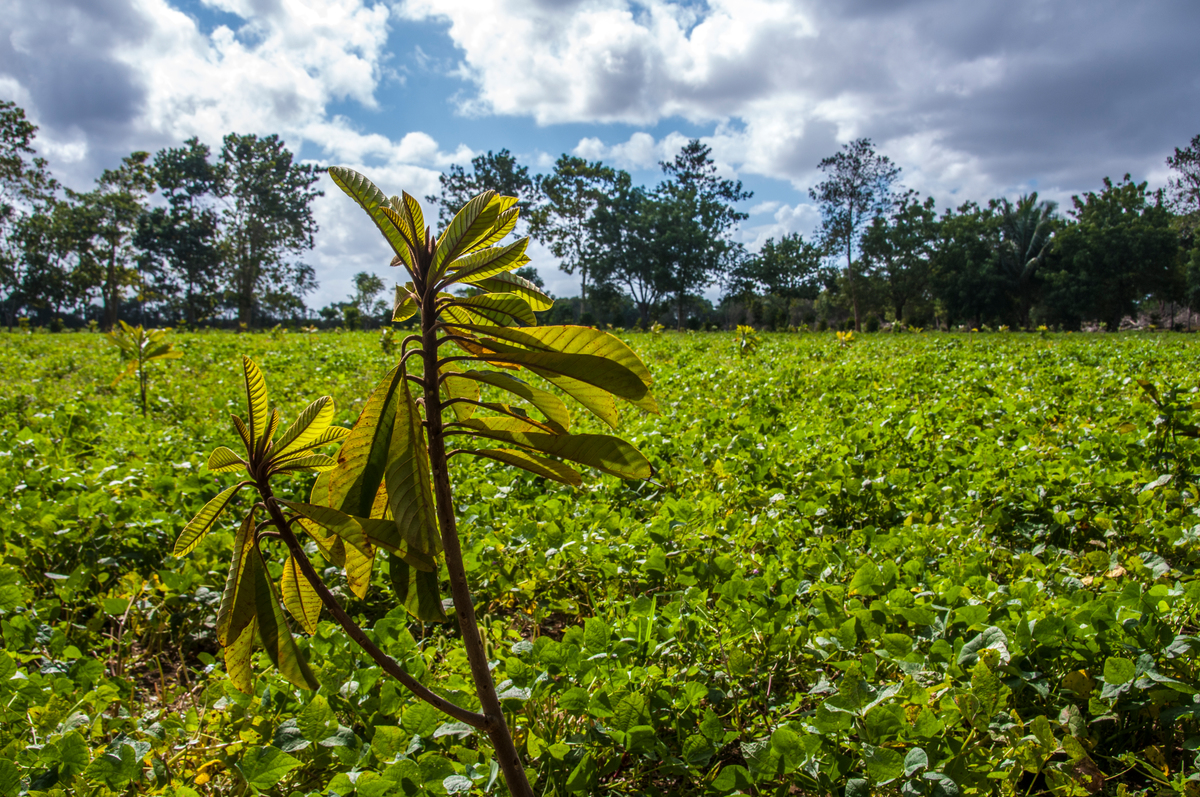
Mexican Mayan farmers visit Finca Organopónica Cayo Piedra in Matanzas province, Cuba.
Smart farmers and communities have used bioremediation for millennia. Permaculture and simple composting employ bioremediation to metabolise unwanted bacteria or pathogens in soils. Simply replanting native species along disturbed shorelines helps take up nutrients and bacteria. Microbes and mycelium can be added to soil, to enhance the natural uptake of unwanted compounds and organisms.
Bionics to Biomimicry
In the 1950s, American biophysicist Otto Schmitt copied the nervous system of a squid to help design an electronic trigger circuit that is still used today to remove noise from signals in digital circuits. He coined the word “biomimetics” to describe the process of taking design advice from organisms and ecosystems. His colleague Jack Steele coined the term “bionics,” later used in Martin Caidin’s novel Cyborg, associated with increasing human powers using artificial body parts.
In 1997, Janine Benyus published Biomimicry: Innovation Inspired by Nature, expanding biomimetics and popularising the idea of using natural systems to design commercial products. The classic example is Velcro, patented in 1955 by Swiss engineer George de Mestra, designed after the surface of common burs.
“When we look at what is truly sustainable,” wrote Benyus, “the only real model that has worked over long periods of time is the natural world.” Producing commercial products, however, is a different matter than restoring degraded ecosystems. Nevertheless, it remains feasible that nature-inspired design could help restore ecological balance.
Last year, Jesse Goldstein at Virginia Commonwealth University and Elizabeth Johnson at University of Exeter, published Biomimicry: New Natures, New Enclosures to address these questions. They critique a “neoliberal illusion” that we help the ecosystem by creating a faster “bioeconomy,” using spider web chemistry to create bullet proof vests, or natural designs to create more powerful aeroplanes, faster computers, sharper video screens, or biotech patents.
They warn that neoliberal economics overlooks biophysical limits and the inherent unsustainability of relentless economic growth. They suggest that the bioeconomy can become another form of private accumulation, whereby patents of nature’s creations replace fences to enclose the natural commons for private profit, driven by venture capital funding, not for the restoration of nature, but for the “reproduction of capital.”
However, biotechnologies can include genuinely restorative systems, including bioremediation fields, a sharkskin design used in hospitals to repel bacteria, or a Nubian beetle technique of drinking from fog, used to collect water for buildings.
“How,” Goldstein and Johnson ask, “can we imagine a form of production that can both reproduce beautiful lives and unmake the infrastructure of our ecologically catastrophic social formation?”
Ecological restoration
To create successful biological design, we not only have to ask, “How does nature solve this physical challenge?” but also ask: “What is natural economics?” The economy of an ecosystem is non-hierarchical It is a web of shared relationships that contribute materials, energy and services to other parts of the network, as growth fluctuates within natural limits.
Lake Winnipeg in Canada suffered from high levels of phosphorus loading from the surrounding community, causing severe algae blooms. Researchers planted cattail to reduce nutrient flows. Certain plant species, such as cattail and canary grass produce sugar-like compounds that move through the roots, into the soil, and enhance nutrient collection and disease resistance. The Lake Winnipeg project has been so successful that researchers are now harvesting cattail as a heating fuel, further increasing the nutrient removal, since the plants are not left on the lakeshore to decompose.
Biologist, Dr. John Todd, has designed what he calls “Living Machines” – bioremediation fields to clean up contaminated soil and water in the US, China, and elsewhere. The system on Moskito Island in the Virgin Islands, treats domestic sewage on a terraced hillside, using solar heat, gravity, and ecological systems to take up nutrients and distribute them to plants, animals, bacteria and fungi throughout the system.
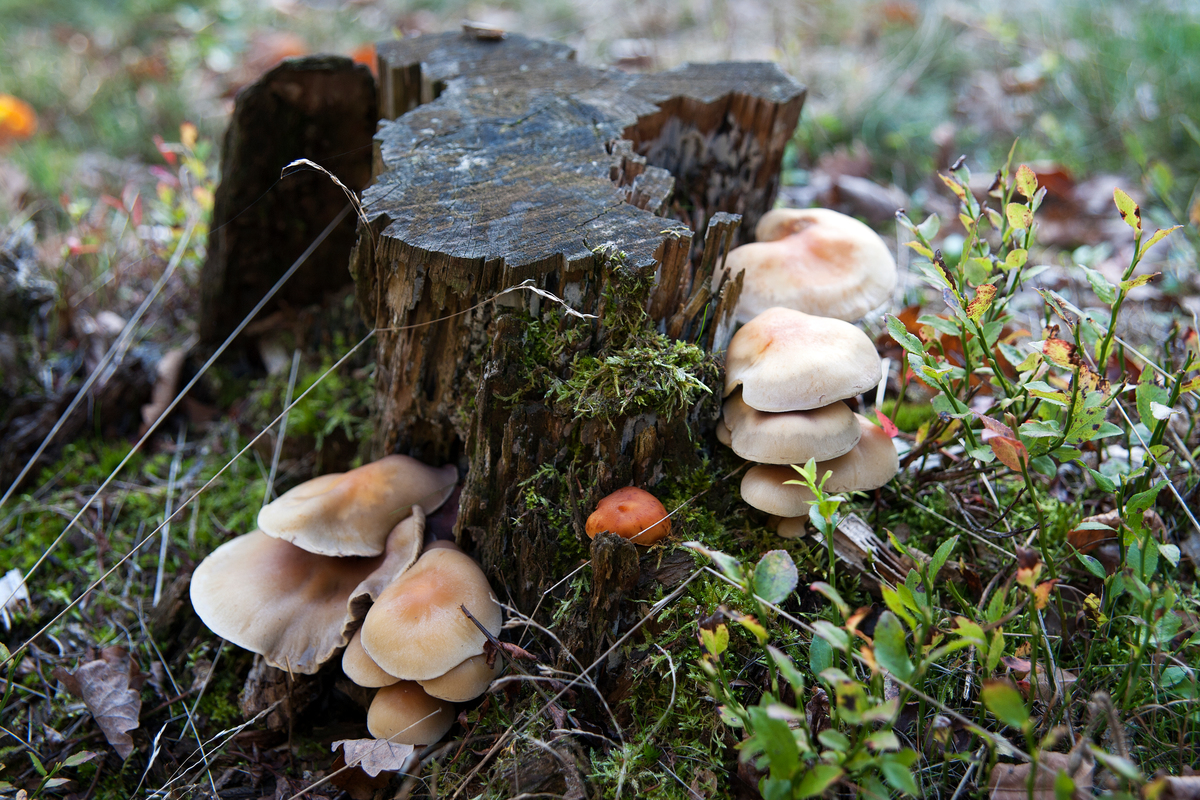
Close up of fungi in the Kellerwald forest near Edersee in the German state of Hesse.
In Mason County, Washington, US, mycologist Paul Stamets uses mushrooms to capture contaminants from water. Mycorrhizae fungi support plants by extending their root structures, and myco-remediation utilises this natural symbiosis to absorb bacteria, nutrients, heavy metals, and toxins. Stamets can match certain fungal species with target pollutants. Wood-degrading fungi are effective in breaking down hydrocarbon compounds and chlorinated pesticides. Oyster mushrooms will capture petroleum products and E. coli. Turkey tail will bind mercury pollution with selenium, forming a non-toxic compound. The Ecuadorian fungus Pestalotiopsis can consume Polyurethane.
The Loess Plateau, in North-central China – a 1200-metre elevation region the size of France between the Wei and Yellow Rivers – is the cradle of Chinese civilization, occupied by people for a million and a half years. However, by the twentieth century, ten thousand years of agriculture, livestock grazing, logging, and amassed dynastic wealth had degraded the land so thoroughly that the rolling hills stood bare, and gullies annually washed a billion tons of sediment into the Yellow River. The ecological devastation caused droughts, famine, and poverty.
In the 1990s, John Liu, an American who had been living in China for over 30 years, joined a Chinese government ecological rehabilitation initiative to restore the Loess Plateau economy by restoring the ecosystem. Local citizens terraced the hills to retain water, replanted trees, grew crops, and created vast ecological zones that allowed biodiversity to recover. Agriculture has grown, and family incomes in the Loess region have since tripled. Over 35-thousand square kilometres of bare land have been restored into a diverse green belt.
Liu emphasises the importance of soil carbon as a way for humanity to restore the carbon disequilibrium in the atmosphere. “CO2 emissions are a symptom of systematic dysfunction on a planetary scale,” says Lui. “Human impact on the climate is not simply emission-based; it is degradation.”
The Loess project was primarily low-tech, employing people while building community cohesion, an example of genuine biological restoration that also restores human economy, health, and welfare.
“Landscape restoration,” explains Lui, “starts with restoring ecological function. This changes the socio-economic function. If the intention of human society is to extract, to manufacture, to buy and sell things, then problems arise. Real economy is understanding that natural ecological functions that create air, water, food and energy are vastly more valuable than anything that has ever been produced or bought and sold. Rather than commoditise nature, we need to naturalise the economy.”
Rex Weyler is an author, journalist and co-founder of Greenpeace International.
Resources, links:
“Thirty Years and Counting: Bioremediation in Its Prime?” Bioscience, March, 2005.
“Contaminants in drinking water: Environmental pollution and health ;” John Fawell Mark J Nieuwenhuijsen” British Medical Journal, 2003.
“Assessing the resistance and bioremediation ability of selected bacterial and protozoan species to heavy metals,” I. Kamika and M. Momba; BioMed Central, Microbiology, Feb. 2013.
Water crisis as the #1 global risk: World Economic Forum, Global Risks 2015 Report.
“Why fresh water shortages will cause the next great global crisis,” The Guardian, March 2015.
“Removal of Escherichia coli from synthetic stormwater using mycofiltration,” Taylor, A., Flatt, A., Beutel, M., Wolff, M., Brownsona, K., Stamets, P.; Ecological Engineering, May, 2014.
Clu-in, EPA report: Citizen’s guide to bio-remediation
“Interview with Paul Stamets”: Mother Earth News.
Helping the Ecosystem through mushroom cultivation: Paul Stamets, Fungi Perfecti
John Todd: Ecological Design
What is Biomimicry: Biomimicry Institute
Biomimicry: New Natures, New Enclosures: Jesse Goldstein, Virginia Commonwealth University, and Elizabeth Johnson, University of Exeter, 2015.
John Lui, documentary: Green Gold.
“Environmental Challenges Facing China – Rehabilitation of the Loess Plateau,” John D. Liu, Director of the Environmental Education Media Project.


